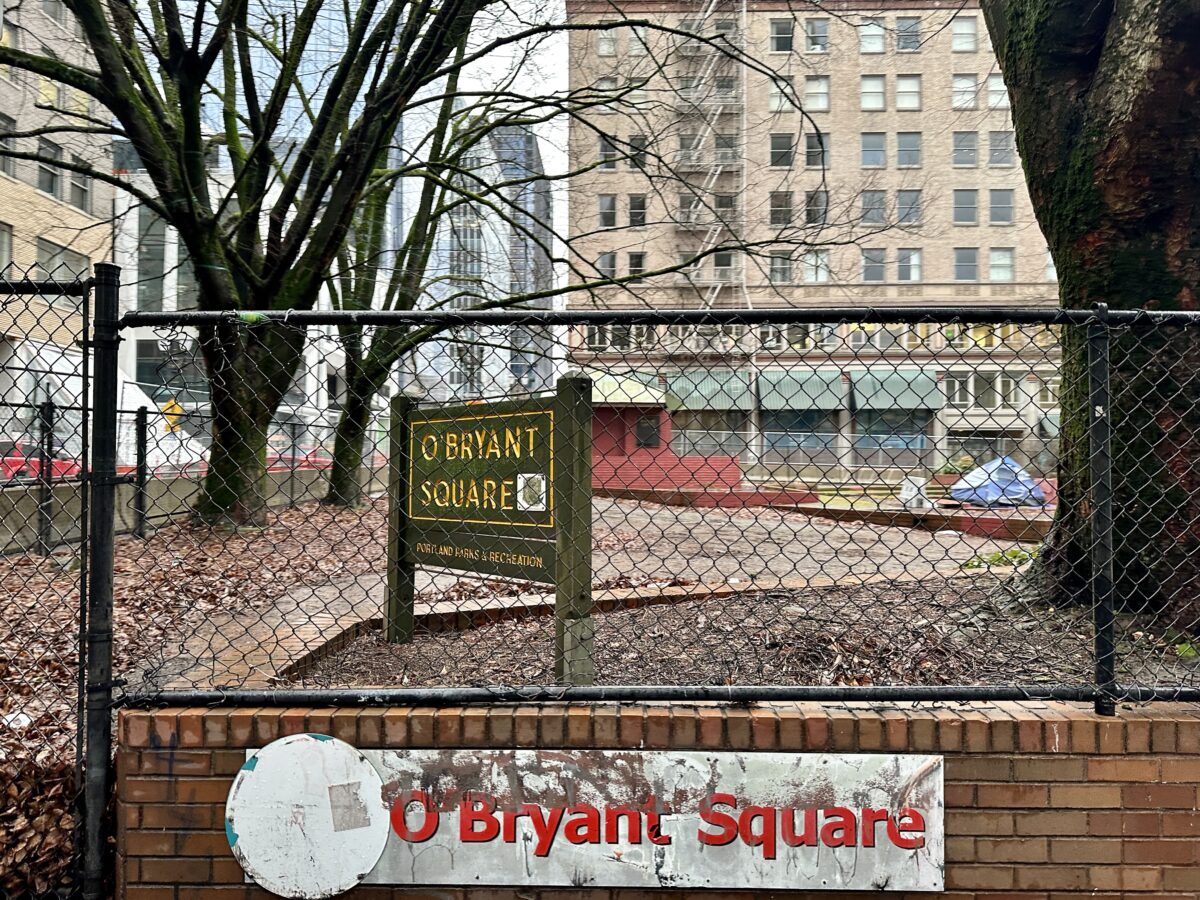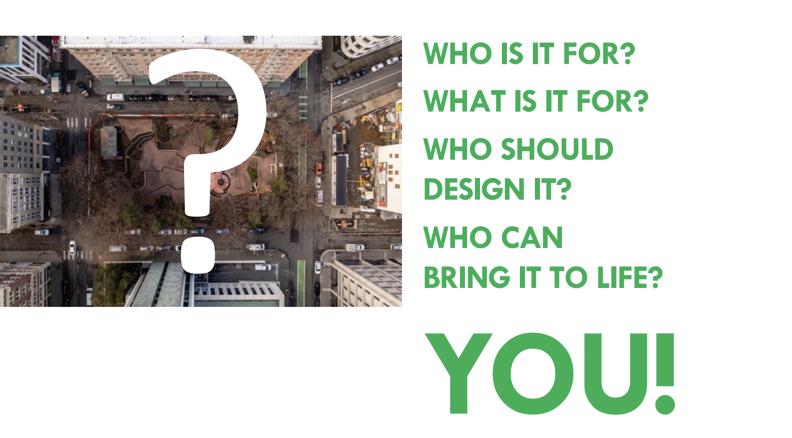It might be hard to believe now, but downtown Portland’s O’Bryant Square was seen as a feat of urban design when it was built in the early 1970s. The currently-defunct plaza, which was constructed with a fountain and an underground parking garage, even won a national design award from the U.S. Department of Housing and Urban Development in 1976.
But that was the high point for the plaza, which has been on a downward spiral ever since. Now, thanks in part to an ambitious vision from the nonprofit Portland Parks Foundation, O’Bryant Square may soon get a second life. It might even be as cool as some of the plazas I saw on my recent trip to The Netherlands. Before that happens however, the demolition crews have to come in.
O’Bryant Square has been closed since 2018 due to structural issues with the underground parking garage and the city spent years trying to decide what to do about it. They finally made a firm decision at the end of last year to demolish the parking structure and fill it with dirt to bring it to surface level: the first phase in O’Bryant Square’s new life.
The demolition process is set to begin this summer, and will cost $4.5 million. The project is under the purview of both the Portland Bureau of Transportation and Parks & Recreation bureau (PP&R) and will be funded through parking revenue and parks bureau fees. But neither PBOT nor PP&R have the funding to implement a long-term strategy for what the park will look like. That’s where the Portland Parks Foundation (PPF) comes in.
O’Bryant Square is located on a small lot at the corner of Southwest Park Avenue and Southwest Harvey Milk Street, in close proximity to several organizations that provide resources for people experiencing mental health and addiction crises, including Multnomah County’s Behavioral Health Resource Center. People who utilize these services have long frequented this park, earning it the rather mean-spirited nickname “Paranoid Park.”
But the neighborhood is changing: later this year, Portland’s Ritz-Carlton will open just catty-corner from the plaza, bringing other new developments with it. PPF Executive Director Randy Gragg said he thinks the diverse conglomeration of people who mingle near O’Bryant Square will create a unique opportunity to create a new public space that works for everybody.
“This is a really fascinating and complicated space to try to create programming for, because everybody has to be in the public space,” Gragg told BikePortland. “Basically what we’re assembling is a community vision for what could happen in the square the day the fences come down.”
PPF is putting together an initiative called “Back to Square One: Rethinking O’Bryant Square”: a collaborative effort between the foundation, Portland State University’s Center for Public Interest Design, Harvard University’s Loeb Fellows and PP&R to brainstorm about what this space should look like — and theorize about the value of public spaces like this in general.
Public plazas and parks have been a very hot topic recently, branching out beyond the traditional urbanist discourse sphere. Here in Portland, this discussion has been multifaceted and sometimes contentious. Carfree spaces popped up all over the city during the pandemic to encourage people to get outside safely, and former PBOT Commissioner Jo Ann Hardesty boosted carfree plazas as an effective way to prevent gun violence. But others are fearful of these spaces being overtaken by drug paraphernalia and camps, which has led to stagnated planning efforts.
However, the benefits of these public spaces are clear — it’s just a question of how the city will go about developing and maintaining more of them. What unfolds at O’Bryant Square over the next few months will be a good case study in hot-button urban planning issues and could inform future plans.
PPF will host two events next week where the public can help come up with ideas for what they want to see in the future O’Bryant Square: an open house from 8:00 am to 7:30 pm on March 8th, and a public forum from 10:00 am to 5:00 pm on March 11th, both at 820 SW Washington St. These will be opportunities to hear from urban planning experts and imagine the best future for downtown Portland. PPF has also created a survey asking for input about what people want to see at O’Bryant, which you can find here.
“There’s a potluck element to it,” Gragg said. “We’re thinking of O’Bryant as a table, and we’re inviting people to bring their best dishes.”
You can find out more about PPF’s initiative at their website.





